In this article, we delve into the fascinatingly fun and educational world of beetles with our beetle coloring pages. In doing so, we celebrate the beauty and diversity of these remarkable insects. Whether you’re a budding artist, an insect enthusiast, or simply seeking a relaxing and enjoyable pastime, join us on this journey as we explore the captivating world of beetle-themed coloring pages, where the possibilities for creativity are as limitless as the insect kingdom itself.

You are welcome to pick the design that you most prefer.
After making your selection, you can effortlessly obtain the free PDF template, print it out, and immerse yourself in the delightful activity of coloring as much as you like.
These designs can also serve as embroidery patterns or serve as a source of inspiration for crafting intricate fine line tattoos.
Beetle facts
For those who are new to my coloring pages, it’s worth noting that I enjoy providing you with the opportunity to delve into the subject matter, allowing you to seamlessly transform your coloring experience into an educational journey.
Let’s get started on that path right now!
Here are lots of fun and interesting, simplified, facts about beetles:
- Most Diverse Group: Beetles are the largest and most diverse order of insects, with over 350,000 recognized species, and it is estimated that there could be as many as a million beetle species yet to be discovered.
- Ancient Insects: Beetles have been around for a very long time, with fossil records dating back over 300 million years, making them one of the oldest insect groups on Earth.
- Variety of Sizes: Beetles come in a wide range of sizes, from the tiny featherwing beetles, which are just a fraction of a millimeter long, to the massive Hercules beetle, which can reach over 6 inches (15 centimeters) in length.
- Adaptability: Beetles are found in almost every habitat on Earth, from deserts and forests to freshwater ecosystems and even inside caves.
- Strong Exoskeleton: They have a hard exoskeleton made of a material called chitin, which provides protection and support. Some species have evolved to have particularly tough exoskeletons, like the rhinoceros beetle.
- Colorful Diversity: Beetles display a stunning array of colors and patterns. Some are brilliantly colored for mating displays, while others mimic their surroundings for camouflage.
- Varied Diets: Beetles have diverse diets. Some are herbivores, feeding on leaves, wood, or nectar, while others are predators, hunting other insects. Some beetles are scavengers, feeding on decaying matter.
- Flight Mastery: Many beetles are excellent fliers. They have two pairs of wings, with the first pair (elytra) serving as protective covers for the delicate hind wings used for flight.
- Bioluminescence: Some beetles, such as fireflies, are bioluminescent, producing their own light for communication and attracting mates.
- Agricultural Pests: Unfortunately, some beetle species are considered agricultural pests, causing damage to crops and stored food products.
- Beneficial Roles: Many beetles are beneficial to ecosystems and agriculture. They aid in pollination, decompose organic matter, and control pest populations by preying on other insects.
- Extreme Survival: Certain beetles are known for their extreme survival skills. The bombardier beetle, for instance, can eject a scalding chemical spray as a defense mechanism.
- Social Beetles: While not as famous as ants or bees, some beetles are social insects and live in colonies. The best-known example is the dung beetle.
- Symbolism: Beetles have cultural significance in various societies. For example, the scarab beetle was revered by ancient Egyptians as a symbol of rebirth and transformation.
- Scientific Study: Beetles have captured the attention of scientists for centuries, contributing to our understanding of evolution, biodiversity, and ecology.
These are just a few of the remarkable aspects of beetles that make them one of the most captivating insect groups on the planet.
Their incredible diversity and adaptability continue to fascinate researchers and nature enthusiasts alike.
We definitely learned a lot about beetles, but there is definitely more to know.
If you would like to continue reading up on them, here are some other reputable resources to check out:
- https://en.wikipedia.org/wiki/Beetle
- https://a-z-animals.com/blog/10-incredible-beetle-facts/
- https://www.si.edu/spotlight/buginfo/beetle
- https://kids.britannica.com/kids/article/beetle/352842
- https://australian.museum/learn/species-identification/ask-an-expert/what-do-beetles-look-like/
- To see all of my free printables, go here.
- If you would like to see my index of free printable coloring pages, go here!
- To see all of my animal coloring pages, go here.
- To see all of my insect-related coloring pages, go here.
Coloring tips
Coloring pictures of beetles can be a fun and creative activity. Here are some of my best tips and tricks to help you get the best results:
- Reference Images: Gather reference images of real beetles or illustrations to understand their colors and patterns accurately. This will help you create a more realistic and visually appealing coloring.
- Select a Color Palette: Decide on a color palette before you start. Beetles come in various colors, so choose colors that you find appealing and suit the beetle species you want to color.
- Layering: Start with a light base color and gradually build up layers of color for depth and shading. Colored pencils and watercolor pencils work well for layering.
- Texture and Details: Pay attention to the texture and details of the beetle. Use fine lines and stippling to replicate the textures of the exoskeleton, and add small details like spots or stripes.
- Blending: Experiment with blending techniques to create smooth transitions between colors. You can use blending pencils, a colorless blender, or even a tissue paper for a soft blend.
- Contrast: Create contrast between light and dark areas to make your beetle pop. Darken areas that are in shadow and highlight those catching the light.
- Color Realism: If you want to achieve a realistic look, observe how light interacts with the beetle’s body. Reflective surfaces may have highlights and reflections.
- Experiment with Backgrounds: Consider adding a background to your beetle. It could be a natural habitat, an abstract design, or even a gradient that complements the colors of your beetle.
- Practice Patience: Coloring can be a time-consuming process, especially if you’re adding intricate details. Take your time and enjoy the creative process.
- Protect Your Work: Once you’re finished, consider using a fixative spray to set the colors and prevent smudging. Be sure to follow the manufacturer’s instructions.
- Experiment with Different Mediums: Don’t limit yourself to just colored pencils. Try watercolors, markers, or digital coloring tools to explore different techniques and styles.
- Practice and Learn: Coloring is a skill that improves with practice. Don’t be discouraged if your first attempts don’t meet your expectations. Keep practicing, and you’ll get better over time.
- Share Your Art: If you’re proud of your beetle coloring, consider sharing it with others online or in person. You can connect with a community of fellow artists and receive feedback and encouragement.
Remember that coloring is a form of self-expression, so there are no strict rules.
Have fun, be creative, and enjoy the process of bringing your beetle pictures to life with color!
Options For Printing:
Letter B is for beetle writing practice worksheets
*My letter B is for beetle printable coloring sheets featured here are tailor-made for classroom use, and they are the sole printables on this page that do not necessitate written authorization for public use.
However, if someone inquires about their source, kindly share the link to this post.
Your cooperation is greatly appreciated!
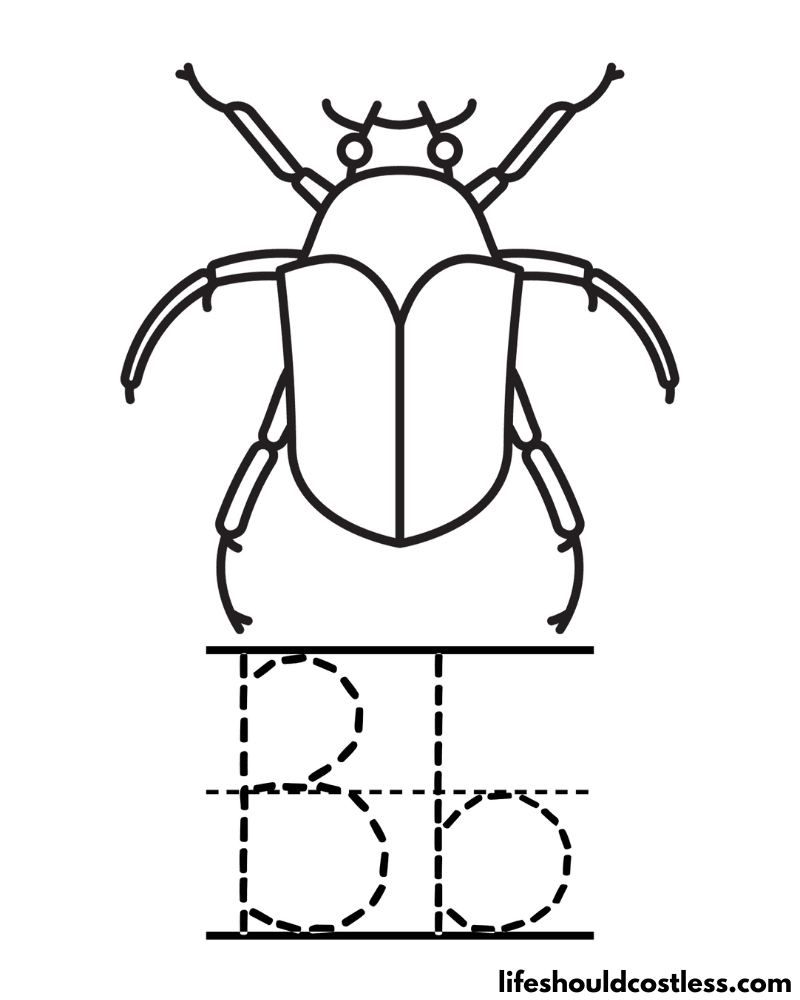

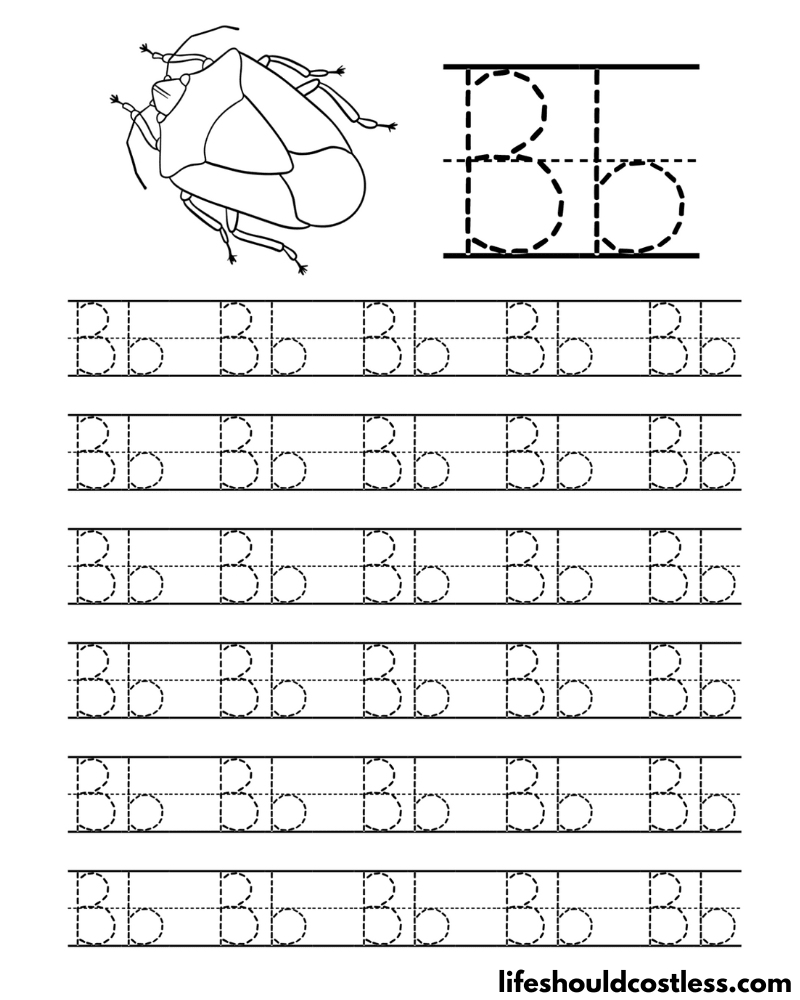
Various beetle designs
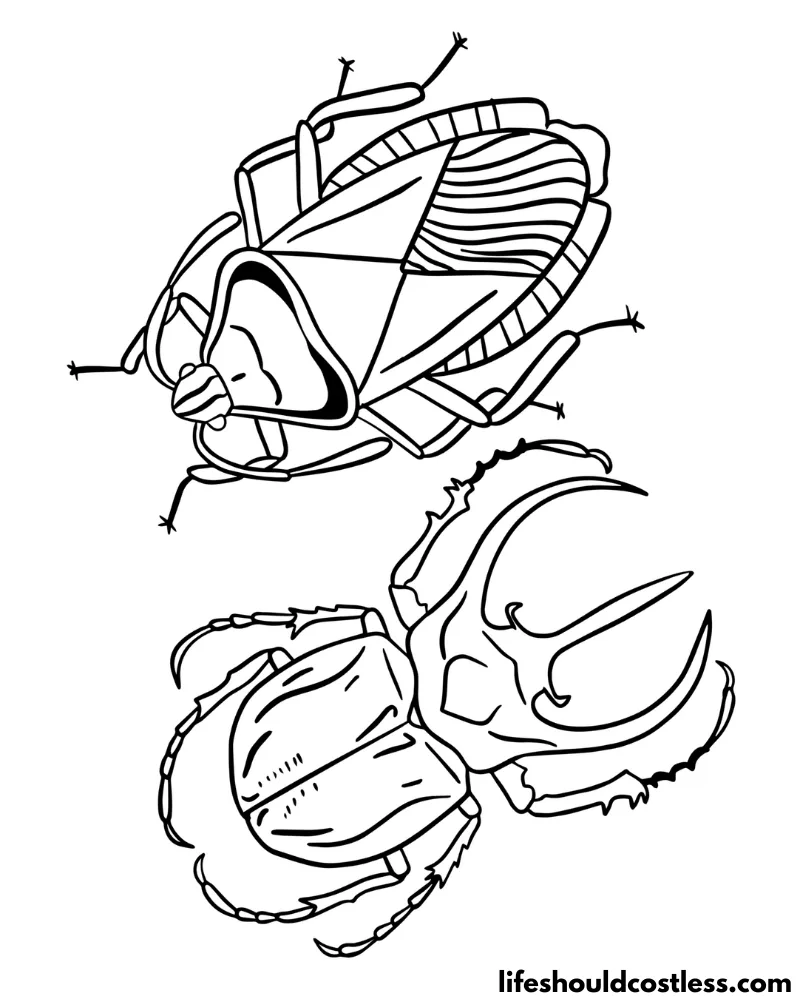
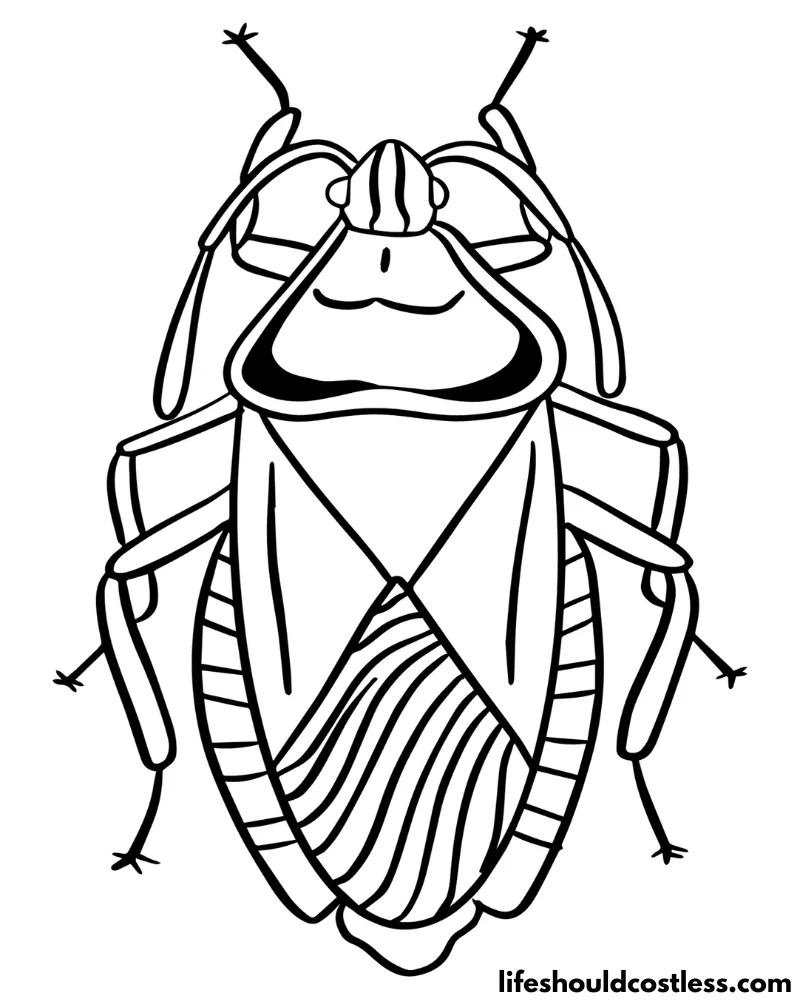
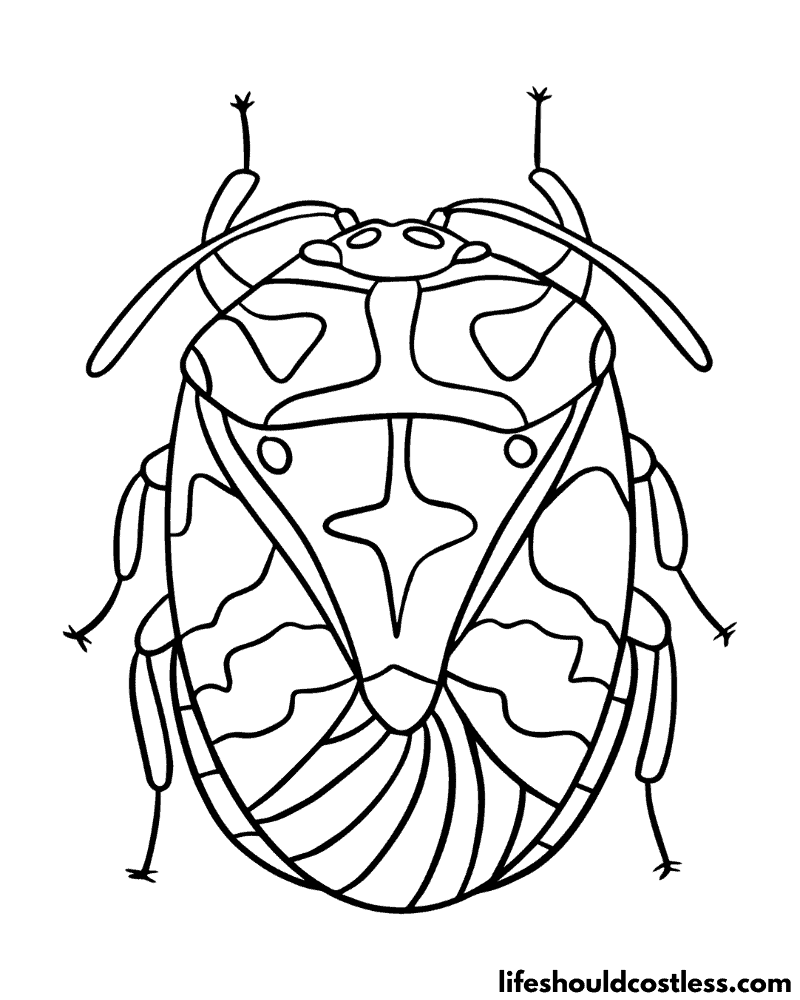
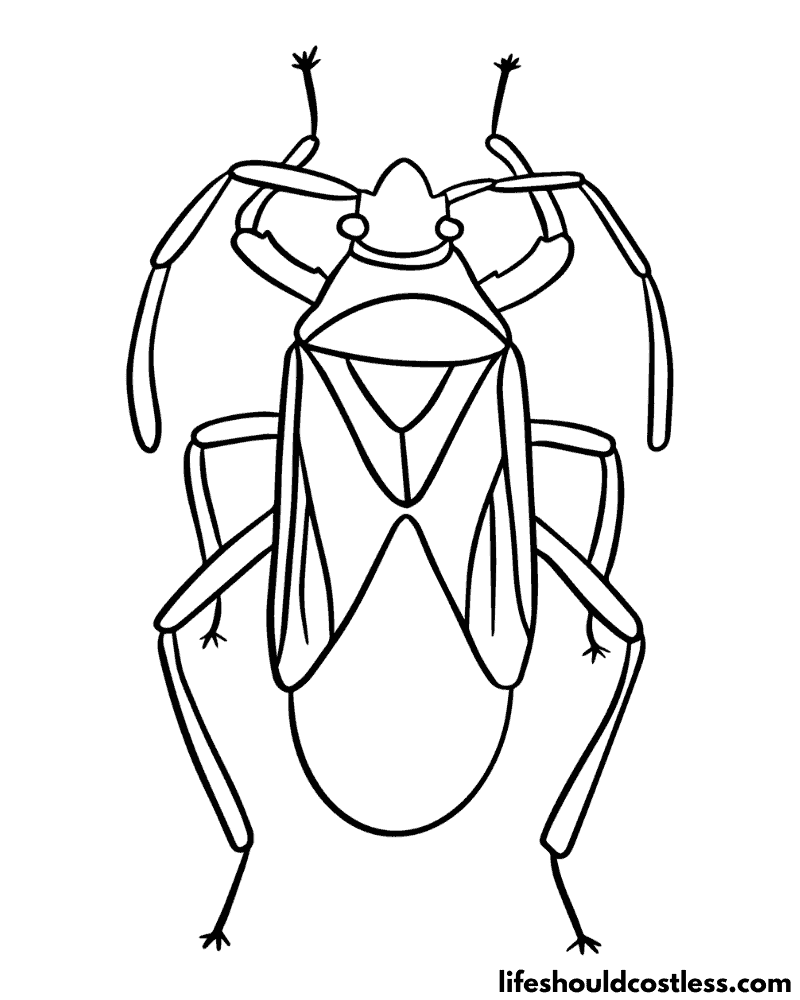
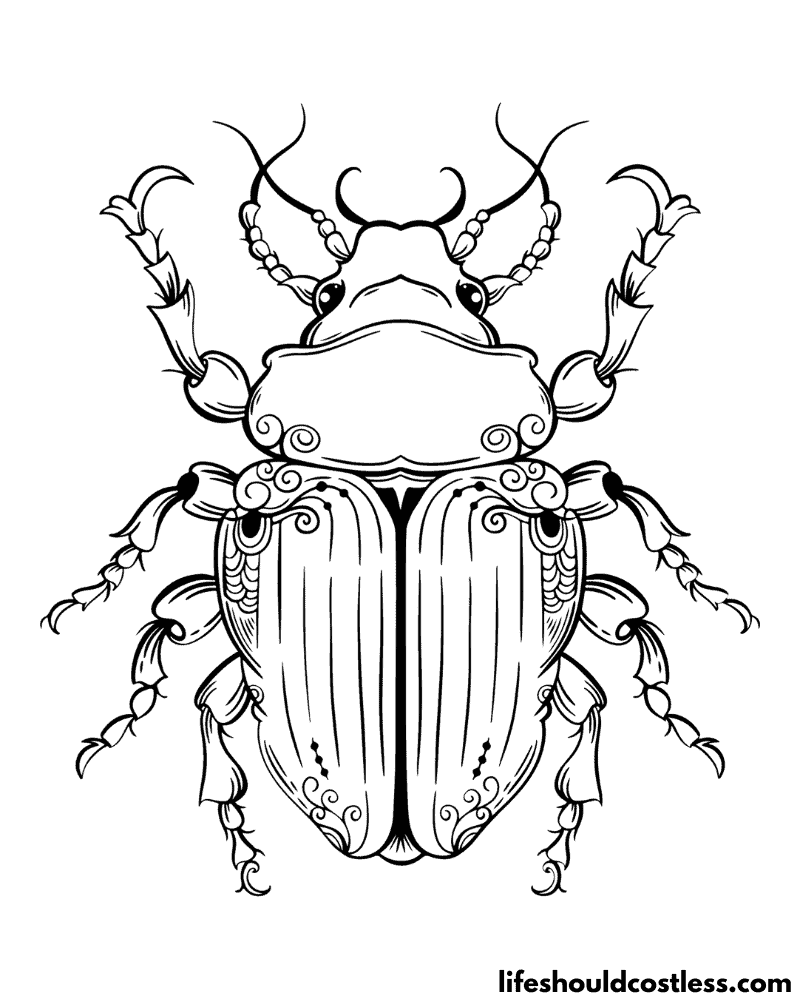
FAQ’s
Beetles come in a wide range of colors, and their colors can vary greatly depending on the species.
Here are some common colors and color patterns found in beetles:
Black and Brown: Many beetles are black or brown in color. These shades often provide camouflage in their natural habitats.
Metallic: Some beetles, like the jewel beetles (Buprestidae), exhibit stunning metallic colors such as green, blue, or copper. These colors are due to the way light interacts with their exoskeletons.
Red and Orange: Certain beetles, like ladybugs (ladybird beetles), are known for their bright red or orange coloration. These colors serve as a warning to predators.
Yellow: Some beetles, such as certain species of fireflies, have vibrant yellow hues. Yellow can also be seen in various leaf beetles.
Stripes and Patterns: Many beetles have stripes, spots, or intricate patterns on their bodies. These patterns can be of various colors and serve different purposes, including camouflage and warning signals.
Bioluminescence: Fireflies and some other beetle species are bioluminescent, emitting a greenish-yellow glow. This light is used for communication and attracting mates.
Camouflage: Some beetles have evolved to mimic the colors and patterns of their surroundings. For example, the ground beetles often have earthy tones to blend in with the soil.
Transparent: There are a few species of beetles with transparent elytra (wing covers), allowing you to see their colorful bodies underneath.
Blue and Green: Certain beetles, like the metallic wood-boring beetles, display striking shades of blue and green, creating a beautiful iridescent effect.
White: While less common, some beetles can be white or pale in color, especially those adapted to snowy or arctic environments.
It’s important to note that beetle colors can vary not only by species but also by individual variation within a species.
Beetles’ colors play various roles in their survival and reproduction, including camouflage, warning predators, and attracting mates.
*I will add more beetle colour / color questions and answers as the questions get sent to me.
Conclusion
In conclusion, our journey through the world of beetle coloring pages has illuminated the remarkable beauty and diversity of these fascinating insects.
As we’ve explored intricate patterns, vibrant colors, and the artistry of bringing these creatures to life on paper, we’ve not only enjoyed a creative pastime but also gained a deeper appreciation for the incredible world of beetles.
Whether you’ve engaged in this artistic endeavor for relaxation, education, or sheer enjoyment, one thing is certain: the beetle-themed coloring pages have allowed us to connect with the natural world in a unique and colorful way.
As we continue to explore the wonders of the insect kingdom through art, let our creativity take flight, just as these remarkable beetles do in their own habitats.
Happy coloring!
Thanks so much for stopping by my blog and supporting my endeavors to make people’s lives a little easier/better/more affordable.
If you liked this post, or found it helpful in any way, please make sure to share it with your family, friends, and co-workers via social media….
Or you could even send them the direct link via email. Whichever way you choose to spread the love, I super appreciate it! ~Sarah
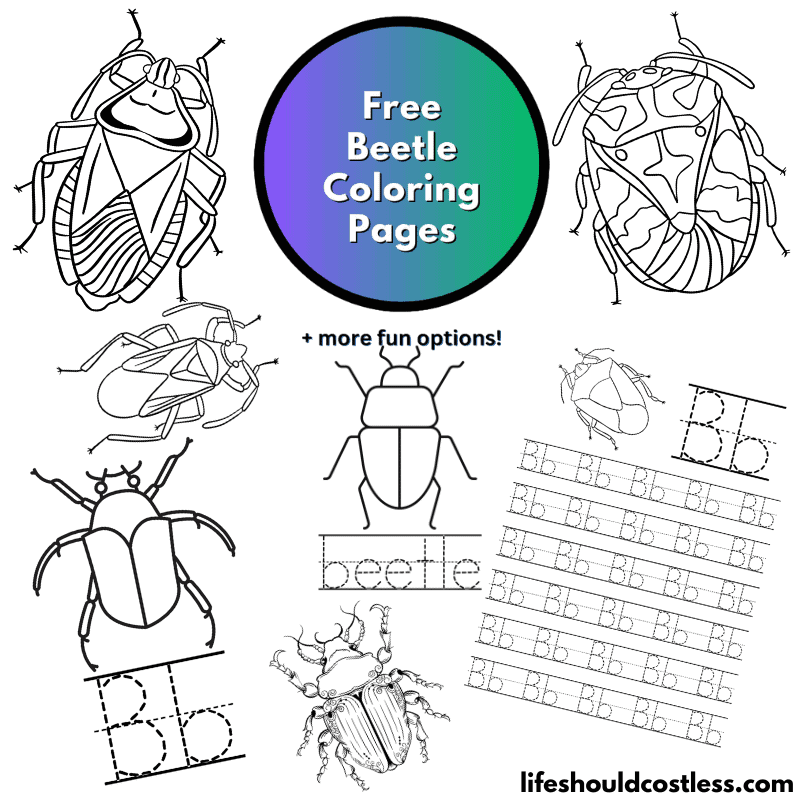
How To Follow & Support This Site
- If you would like to subscribe to my email list, go here.
- Make sure to follow along via social media, by going here.
- If you would like to learn how to really show your support to this site (at no cost to you), go here.
- If you would like to make a direct donation to the site, go here.
Check out my other free printables
- To see all of my free printables, go here.
- If you would like to see my index of free printable coloring pages, go here!
- To see all of my animal coloring pages, go here.
- To see all of my insect-related coloring pages, go here.
Otherwise, here are direct links to several of my other related posts that you’re also going to love:
Animals / Insects
Animals / Birds
Animals / Mammals
Other good resources for a printable beetle
- https://www.animalstown.com/animals/d/dung-beetle/coloring-pages/dung-beetle-coloring-01.php
- https://www.edupics.com/coloring-page-beetles-i13267.html
- https://www.learnaboutnature.com/beetle-coloring-page-7/
*This post was originally shared to this blog on 11/19/2023, and has since been updated to improve user experience, add video instruction, as well as to make it as shareable as possible across the social medias.
**Please note that I do try my hardest to provide factual, but easy to understand, information about each topic. If you notice a discrepancy in my coloring pages, facts, or see something that you deem “misinformation/incorrect” please make sure to notify me about it. I would prefer that you send me an email with a link to a more reputable resource on that subject, so that I can correct it as soon as possible. Thanks so much for helping this site become the best that it can be!
***Resources from djinkers were used in the production of this article.
***Resources from djinkers were used in the production of this article.
